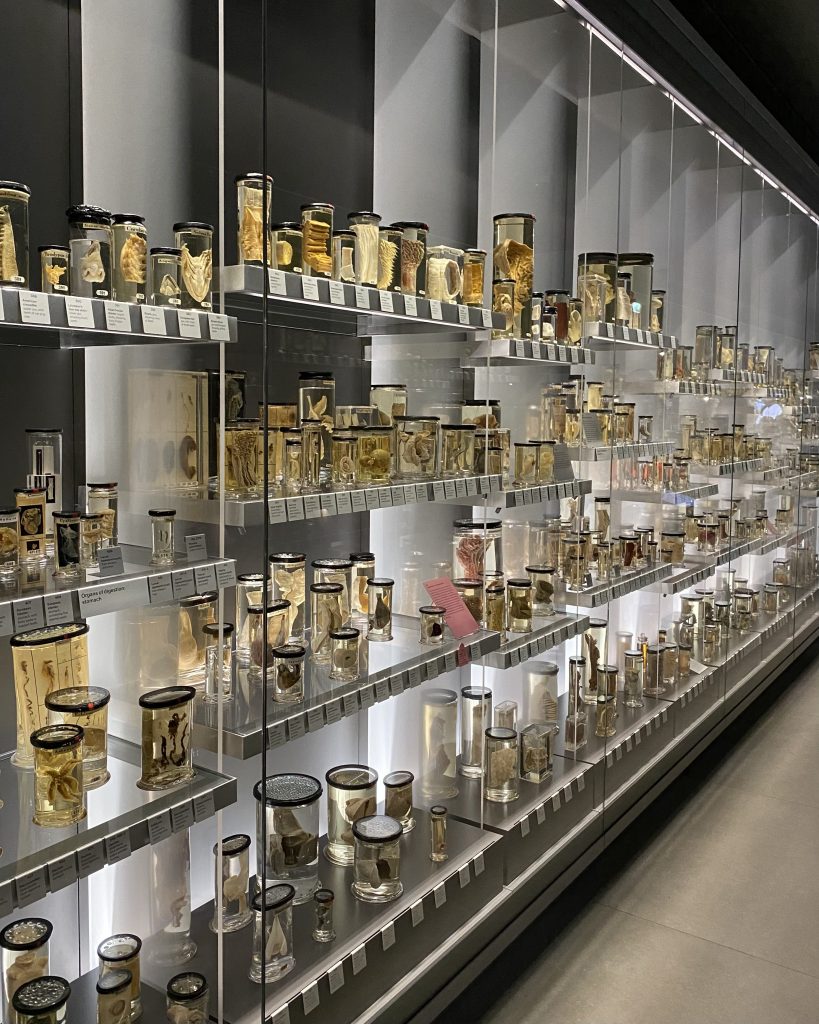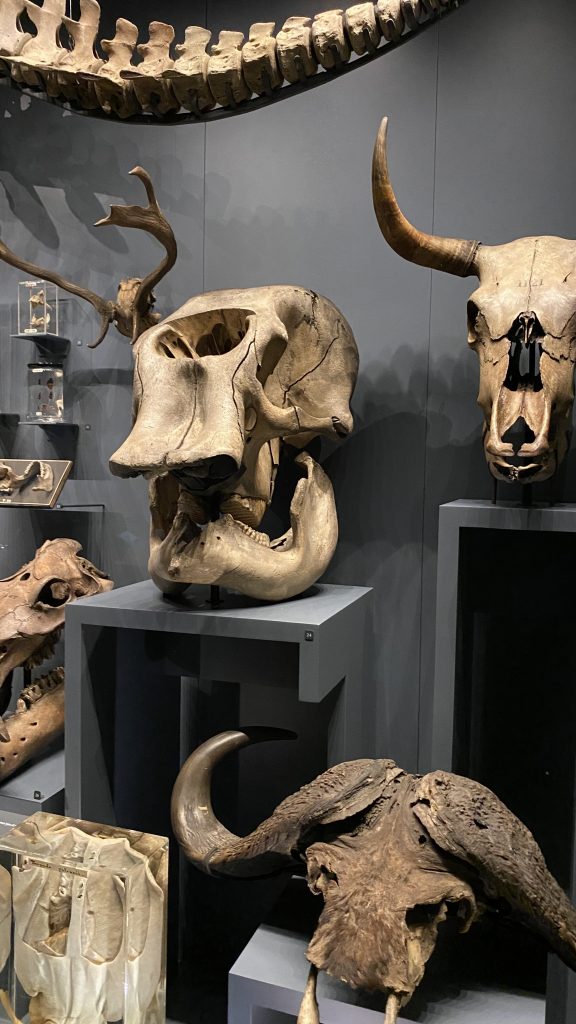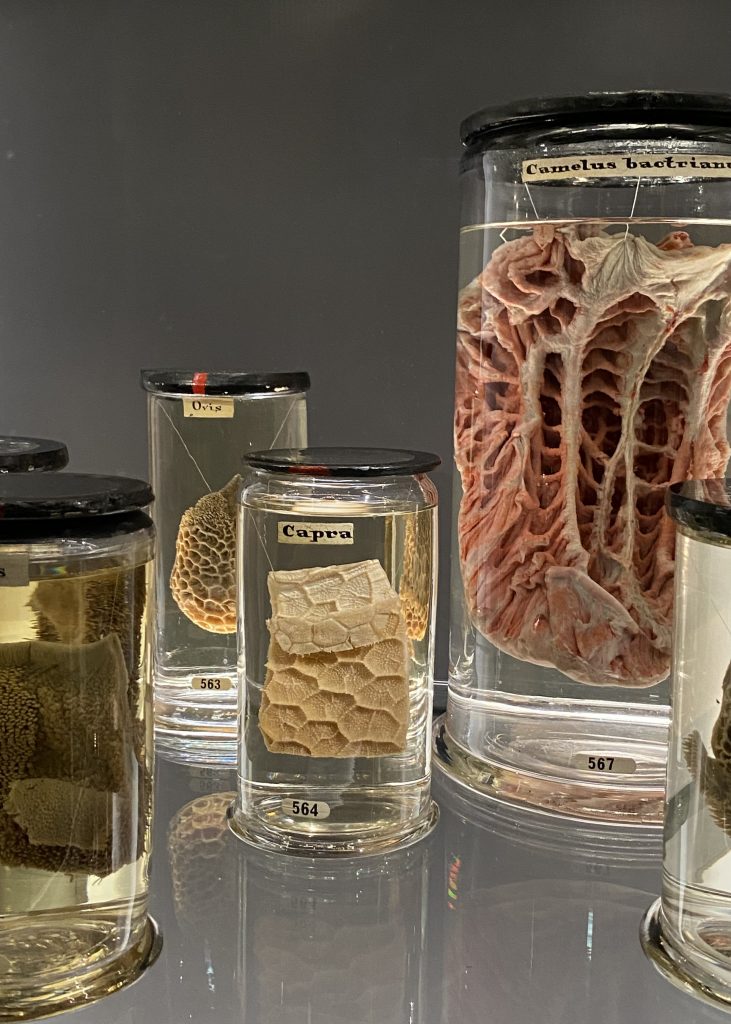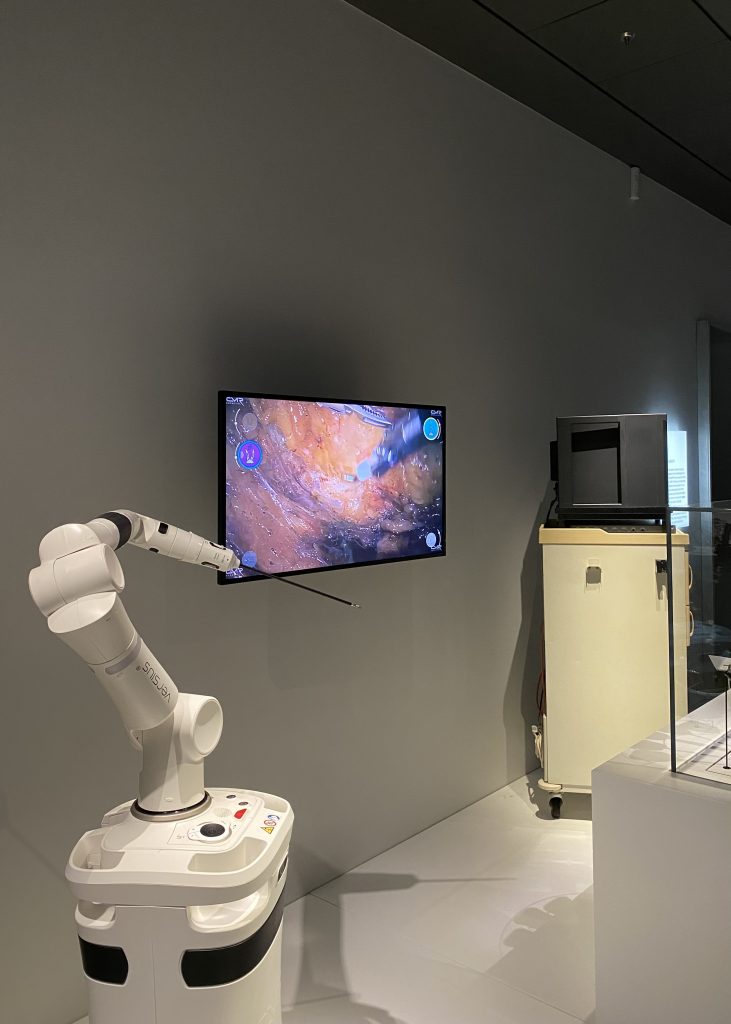16th October ♡
On Tuesday, I had the opportunity to visit the recently redesigned Hunterian Museum at the Royal College of Surgeons of England, with the renovation led by Casson Mann.

A central theme of the museum is the story of John Hunter, an influential 18th-century anatomist, physician, and surgeon, often considered one of the founders of modern scientific surgery.
His pioneering approach to medical research and practice is highlighted throughout the museum’s narrative, which aims to emphasize both his innovative methods and the ethical complexities surrounding his work.
The redesign enhances this narrative by establishing a coherent chronological framework that intertwines Hunter’s life and legacy with the history of surgery, from its rudimentary beginnings to the advancements of contemporary medical practices. The museum’s layout encourages visitors to follow the evolution of surgery, illustrating how medical knowledge has developed alongside societal attitudes and ethical considerations.
Through a blend of unexpected elements and thought-provoking contrasts, the museum’s eight galleries not only document the progression of medical knowledge but also situate historical practices within their complex and often controversial contexts.
Notably, the Long Gallery serves as a centrepiece of the redesign, featuring over 2,000 illuminated anatomical specimen jars that form part of Hunter’s original collection. These jars contain specimens ranging from human organs and skeletal remains to preserved animal tissues, showcasing the breadth of Hunter’s research. The display encourages visitors to engage in a detailed examination of their contents, prompting reflection on the intersections between science, anatomy, and the human condition.
The careful curation of the collection, with digital displays and interactive elements, invites contemporary audiences to explore the profound shifts in medical understanding and the ongoing ethical debates within the field.


